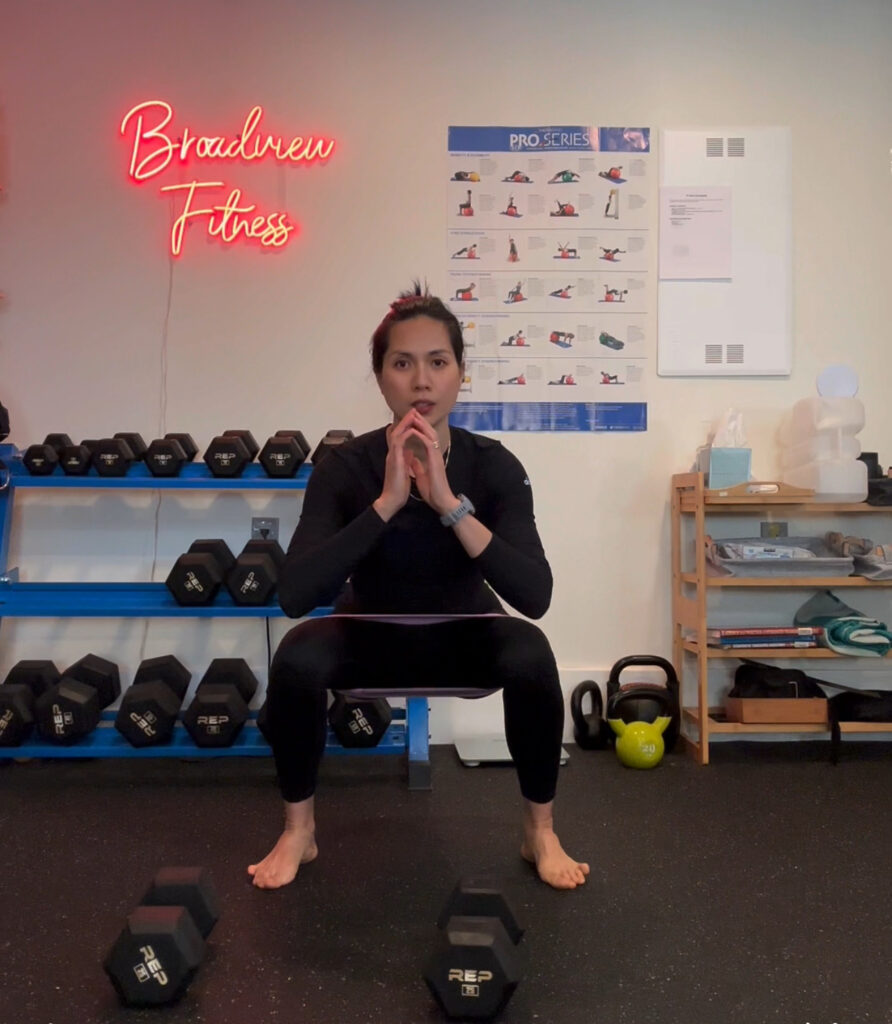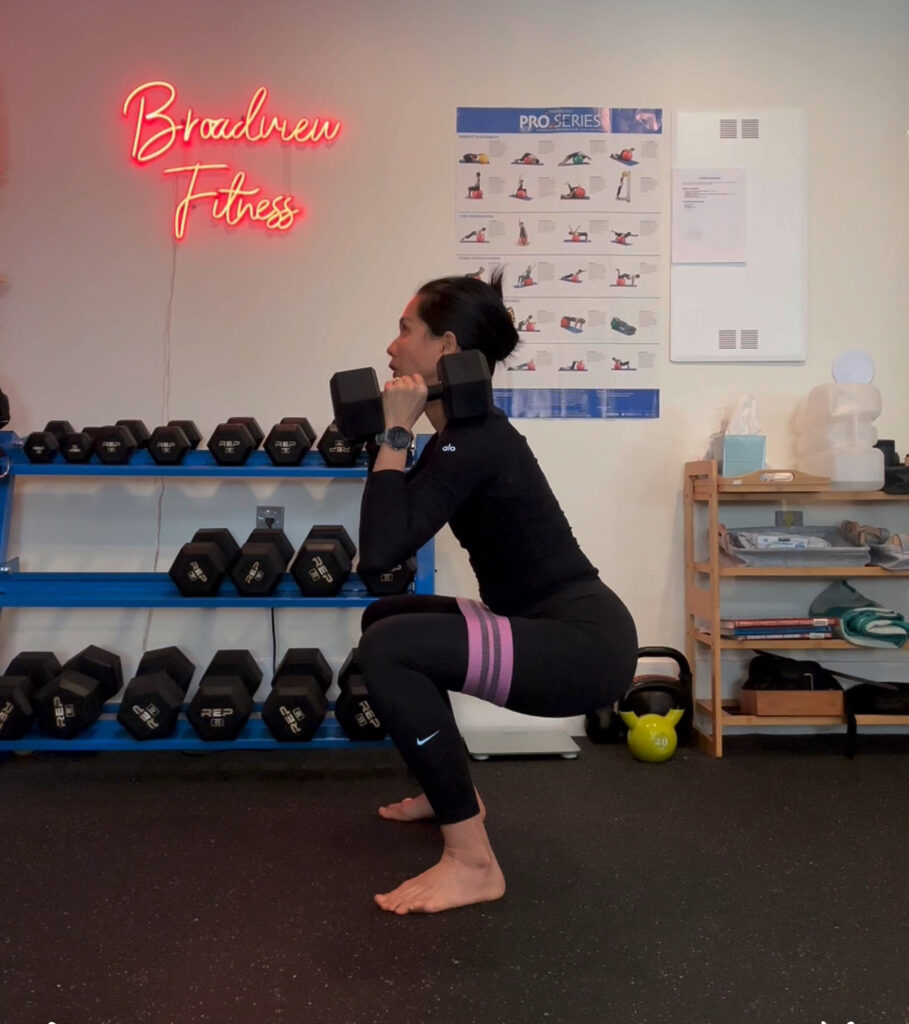by Mia Pope -Broadview Health & Fitness LLC
(1) The Most Common Squat Mistakes
Squatting seems simple — just bend and stand up — but there are several common mistakes that can put stress on your knees and lower back:
Rushed Reps or Too Much Weight: Going too heavy or too fast prevents your muscles from firing in the right order.
Knee Valgus (Knees Caving In): This happens when your knees fall inward as you stand up. It’s often caused by weak glutes, tight ankles, or poor motor control.
Butt Wink: When the pelvis tucks under at the bottom of a squat, rounding your lower back. This can happen due to limited hip or ankle mobility.
Early Hip Drive: When your hips rise faster than your chest out of the bottom of the squat, shifting the load to your lower back.
Poor Foot or Ankle Position: Flat arches or unstable
(2) Why Squats Are Crucial for Hip and Knee Health
Squats are one of the most fundamental human movement patterns. When done properly:
Regular squatting helps prevent the “melting candle” effect — weak glutes, inward-caving knees, and hip instability that increase knee strain with age.
They strengthen the glutes and quadriceps, which stabilize your hips and knees.
They train your body to move symmetrically and build resilience in the joints.
They help improve mobility in the hips and ankles, reducing stiffness and injury risk.
(2) Why Squats Are Crucial for Hip and Knee Health
Squats are one of the most fundamental human movement patterns. When done properly:
- They strengthen the glutes and quadriceps, which stabilize your hips and knees.
- They train your body to move symmetrically and build resilience in the joints.
- They help improve mobility in the hips and ankles, reducing stiffness and injury risk.
- Regular squatting helps prevent the “melting candle” effect — weak glutes, inward-caving knees, and hip instability that increase knee strain with age.

(3) How Squats Build Core Strength
Squats are a full-body stability exercise, not just a leg workout:
- Your core muscles brace your spine to keep your torso upright.
- Your deep stabilizers — like the transverse abdominis and obliques — prevent collapse under load.
- Maintaining a neutral spine and controlled breathing (“brace and breathe”) trains your core for real-life movements, not just aesthetics.
(4) Why Squats Help Burn Fat and Build Muscle
Squats recruit large muscle groups — quads, hamstrings, glutes, and core — which:
- Burn more calories during and after the workout (higher EPOC effect).
- Boost hormone responses that support fat loss and lean muscle growth.
- Improve balance and coordination, increasing your training capacity.
- Are highly functional — they mimic real-life movements like sitting, standing, lifting, and climbing stairs.

(5) How to Adjust Your Squat If You Have Knee Valgus
If your knees cave inward (valgus), here’s how to fix it:
Check Ankle Mobility: Tight ankles often force the knees inward. Add calf stretches and dorsiflexion drills to improve range of motion.
Strengthen the Glutes: Focus on your glute medius and hip external rotators — clamshells, lateral band walks, single-leg bridges, and hip thrusts build the stability needed to keep your knees aligned.
Use a Resistance Band: Place a mini-band just above or below your knees to cue “knees out.” The outward pressure trains proper alignment and helps your hips engage correctly.
Add a Hip Cue:
When you go down, gently lift your tailbone and imagine you have a logo on the back of your pants — as you descend, move that logo up toward the ceiling.
When you come up, put your tailbone down to bring your pelvis back to neutral and finish the movement strong through your glutes.
This simple visual cue helps activate the hips, maintain spinal alignment, and prevent your knees from collapsing inward.
Film Your Squat: Visual feedback helps connect your mind to your movement pattern. Watch that your knees track in line with your toes.
Control the Descent: Move slowly, keep weight evenly through midfoot and heel, and gently drive your knees outward as you rise.
Lighten the Load: Reduce the weight until your alignment and control feel consistent.
Consistency: Even experienced lifters can see knee valgus reappear under fatigue or heavy load — so check your form regularly and stay mindful.
